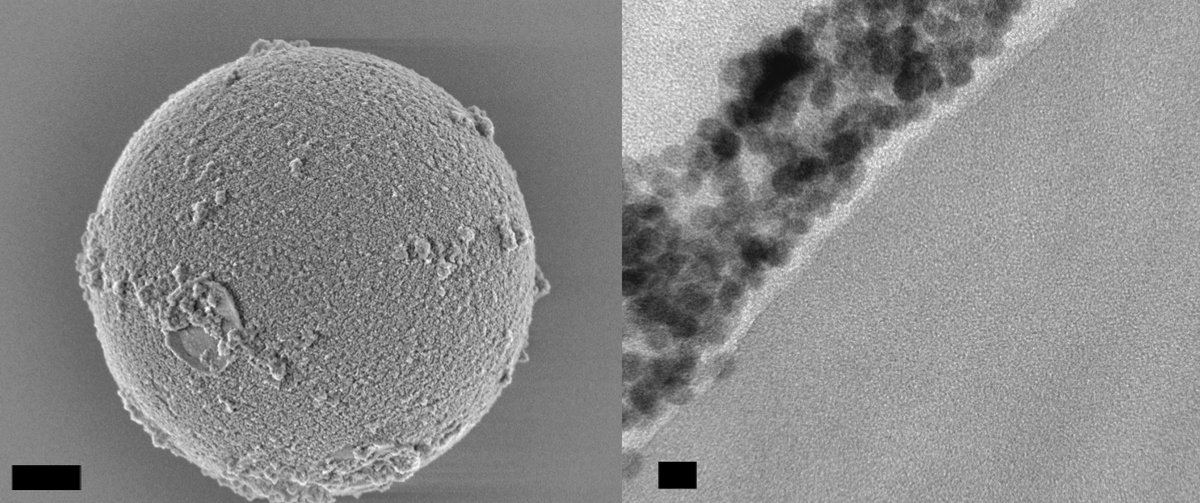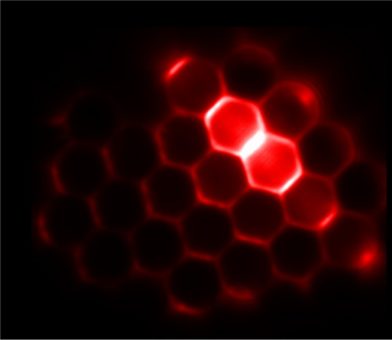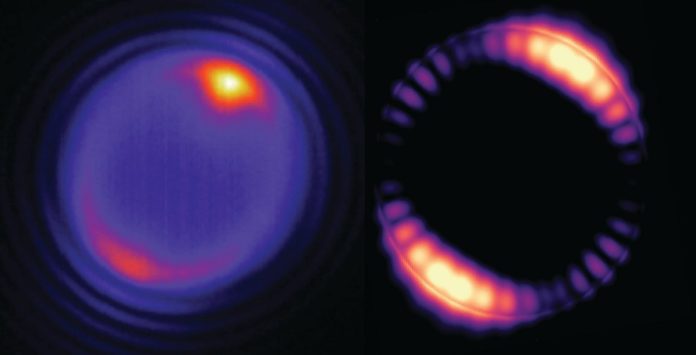Now it is possible to convert nanoparticle-coated microscopic beads into lasers, thanks to the new technique demonstrated by Berkeley scientists. The technique opens up the possibility for imaging or controlling biological activity with infrared light, and for the fabrication of light-based computer chips.
The laser smaller than red blood cells convert infrared light into light at higher frequencies, are among the smallest continuously emitting lasers of their kind ever reported and can constantly and stably emit light for hours at a time, even when submerged in biological fluids such as blood serum.
Scientists blended the beads with sodium yttrium fluoride nanoparticles “doped,” or installed, with thulium, a component having a place with a group of metals known as lanthanides. The Molecular Foundry is a nanoscience inquire about focus open to analysts from around the globe.

They then used computational models to predict that thulium-doped nanoparticles exposed to infrared laser light at a specific frequency. They found that it could emit light at a higher frequency than this infrared light in a counterintuitive process known as “upconversion”.
The beads coated with these “upconverting nanoparticles” emitted unexpectedly bright light at very specific wavelengths, or colors.
The spikes were clearly periodic and clearly reproducible. They are a light-based analog to so-called “whispering gallery” acoustics that can cause sound waves to bounce along the walls of a circular room so that even a whisper can be heard on the opposite side of the room.
At the point when an infrared laser energizes the thulium-doped nanoparticles along the external surface of the globules, the light radiated by the nanoparticles can ricochet around the inward surface of the dot simply like whispers skipping along the walls of the cathedral.
When the intensity of light traveling around these beads reaches a certain threshold, the light can stimulate the emission of more light with the exact same color, and that light, in turn, can stimulate even more light. This amplification of light, the basis for all lasers, produces intense light at a very narrow range of wavelengths in the beads.
Scientists thought lanthanide-doped nanoparticles are potential candidates for microlasers. They became convinced and found that when exposing beams to an infrared laser with enough power the beads, the beams turned into upconverting lasers, with higher frequencies than the original laser.
The beams got the potential of producing laser light at the lowest powers ever recorded for upconverting nanoparticle-based lasers.

Fernandez-Bravo said, “The low thresholds allow these lasers to operate continuously for hours at much lower powers than previous lasers.”
The microlasers performed stably after five hours of continuous use.
Researchers are also exploring how to carefully tune the output light from the continuously emitting microlasers by simply changing the size and composition of the beads. And they have used a robotic system at the Molecular Foundry known as WANDA (Workstation for Automated Nanomaterial Discovery and Analysis) to combine different dopant elements and tune the nanoparticles’ performance.
There are many potential applications for the microlasers, such as in controlling the activity of neurons or optical microchips, sensing chemicals, and detecting environmental and temperature changes.
The co-authors of the study include Angel Fernandez-Bravo, Kaiyuan Yao, Edward S. Barnard, Nicholas J. Borys, Elizabeth S. Levy, Bining Tian, Cheryl A. Tajon, M. Virginia Altoe, Shaul Aloni, Bruce E. Cohen, Emory M. Chan & P. James Schuck.
Their findings are detailed in a report published online June 18 in Nature Nanotechnology.
